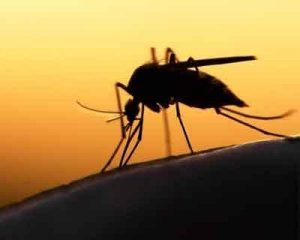- Home
- Editorial
- News
- Practice Guidelines
- Anesthesiology Guidelines
- Cancer Guidelines
- Cardiac Sciences Guidelines
- Critical Care Guidelines
- Dentistry Guidelines
- Dermatology Guidelines
- Diabetes and Endo Guidelines
- Diagnostics Guidelines
- ENT Guidelines
- Featured Practice Guidelines
- Gastroenterology Guidelines
- Geriatrics Guidelines
- Medicine Guidelines
- Nephrology Guidelines
- Neurosciences Guidelines
- Obs and Gynae Guidelines
- Ophthalmology Guidelines
- Orthopaedics Guidelines
- Paediatrics Guidelines
- Psychiatry Guidelines
- Pulmonology Guidelines
- Radiology Guidelines
- Surgery Guidelines
- Urology Guidelines
WHO launches mosquito sterilization programme to control vector-borne diseases

According to the WHO, diseases transmitted by mosquitoes such as malaria, dengue, Zika, chikungunya, and yellow fever account for about 17% of all infectious diseases globally and result in more than 700,000 deaths annually. keeping this in view WHO has announced the launch of a program to sterilize male mosquitoes, and control vector-borne diseases such as Zika and dengue.
The US Department of Agriculture has developed Sterile Insect Technique and has successfully reduced the populations of the Mediterranean fruit fly and the New World screwworm fly. his technique will soon be tested as part of global health efforts to control diseases such as chikungunya, dengue, and Zika.
The Sterile Insect Technique (SIT) is a form of insect birth control. The process involves rearing large quantities of sterilized male mosquitoes in dedicated facilities and then releasing them to mate with females in the wild. As they do not produce any offspring, the insect population declines over time.
It es radiation to make large numbers of male mosquitoes unable to reproduce. The mosquitoes are then released in the wild where they mate with females but cannot produce offspring. Aedes mosquitos will be the first kind to be treated with SIT.
"Half the world's population is now at risk of dengue," said Soumya Swaminathan, MD, WHO's chief scientist. "And despite our best efforts, current efforts to control it are falling short. We desperately need new approaches and this initiative is both promising and exciting."
In recent decades, the incidence of dengue has increased dramatically due to environmental changes, unregulated urbanization, transport and travel, and insufficient sustainable vector control tools and their application.
Diseases transmitted by mosquitoes such as malaria, dengue, Zika, chikungunya, and yellow fever account for about 17% of all infectious diseases globally, claiming more than 700,000 lives each year, and inflicting suffering on many more. The 2015 outbreak of Zika in Brazil was linked to an increase in the number of babies being born with microcephaly.
The guidance on using the technique to control diseases in humans recommends adopting a phased approach that allows time to test the efficacy of the sterilized insects. Epidemiological indicators monitor the impact of the method on disease-transmission. It also provides recommendations on mass production of the sterile mosquitoes, government and community engagement, measuring the impact of the technique, and assessing cost-effectiveness.
“Countries seriously affected by dengue and Zika have shown real interest in testing this technology as it can help suppress mosquitoes that are developing resistance to insecticides, which are also negatively impacting the environment,” said Florence Fouque, a scientist at TDR.
For further reference log on to:
WHO press release

Disclaimer: This site is primarily intended for healthcare professionals. Any content/information on this website does not replace the advice of medical and/or health professionals and should not be construed as medical/diagnostic advice/endorsement or prescription. Use of this site is subject to our terms of use, privacy policy, advertisement policy. © 2020 Minerva Medical Treatment Pvt Ltd